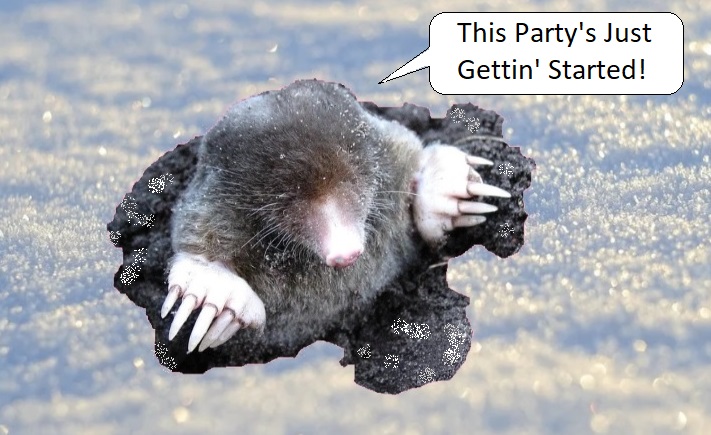Do Moles Hibernate for the Winter?

Northwest Mole Pros realizes that many homeowners in King County and Snohomish County share a common belief: that moles hibernate. Looking at a list of small mammals that DO hibernate – including deer mice, ground squirrels, skunks, and prairie dogs – one might easily assume that moles hibernate, as well.
If moles hibernate, the homeowner may assume, then the battle to preserve their lawns from mole damage can be relaxed for the winter. The constant vigilance of the spring and summer can cease.
Unfortunately, this is not the case. Moles can and do damage your lawn, landscaping, and other property throughout the winter. But before we dismiss this idea and move on, let’s look at some of the reasons people may believe that moles hibernate.
Lights out!
One reason folks assume that moles hibernate is that it’s too dark to see them! Going to work and coming home in the dark is not only depressing, it is also a great way to miss the signs of mole activity in your lawn! Come the weekend, you may have more daylight to devote to your lawn IF it’s not raining. In short, winter means much more time spent indoors, and mole problems can fall “out of sight, out of mind.” Unfortunately, you may be in for an unpleasant surprise when the sun shows its face in the Spring.
Wetter is Better!
Moles love earthworms – they’re served at almost every meal! You’ll find worms throughout your soil, but particularly in moist soil. Of course, the Northwest is wetter in the winter, so there is a much wider selection of moist soil for the worms to enjoy. They tend to spread out and the moles follow them. This means that the patch in your lawn where you saw moles in the summer may indeed go quiet – but they’re not gone! They have just relocated slightly to cause fresh damage in a NEW section of your lawn! So, less activity may simply be less CONCENTRATED activity.
Calm Surface, Deep Damage
In winter, the soil freezes from the surface downward. Moles must dig deeper and deeper to find food and relative warmth. Once again, the quiet you observe at the surface is misleading; the damage has gone deeper, including damage to the roots of your plants, shrubs, and trees.
But wait, there’s more… moles tunnels fill with groundwater that freezes and thaws, expands and contracts, which can cause damage to concrete patios, walkways, and pavers.
So, Do Moles Hibernate? NO. Now What?
Despite the rain, darkness, and colder temperatures, homeowners must maintain their mole alertness. The signs of mole activity may be more subtle, happening over a wider and deeper area, but you should continue to walk your property and look for clues. If you see telltale tunneling, veining, or mounding, reach out for professional help!
Northwest Mole Pros is Ready to Assist You!
You have invested countless hours – and dollars – into your lawn, shrubs, trees, and other landscaping features. If moles are damaging your property, get help as soon as you can. In northern King County and southern Snohomish County, the name to know is Northwest Mole Pros. Call us at (425) 368-3700, find us on the web at www.nwmole.com, or email us at CustomerCare@nwmole.com. The time to act is NOW, and Northwest Mole Pros is ready to help you solve your mole problem!
